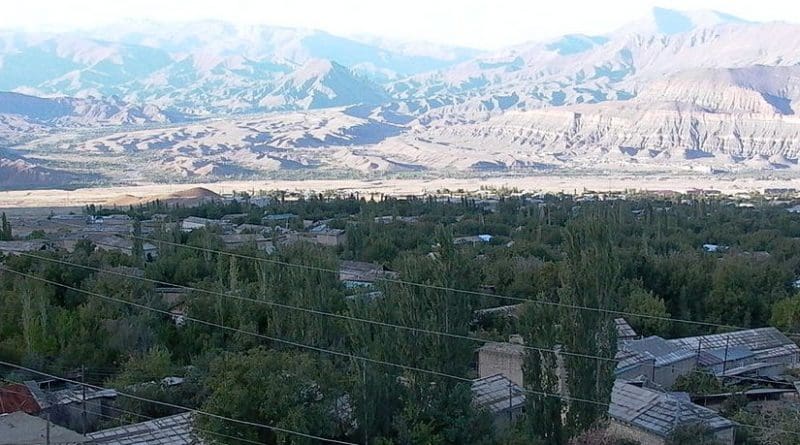Intercultural Dialogue Reflected In Nakhchivan’s Cultural Monuments – OpEd
By Peter Tase
Under the patronage of the President of Azerbaijan H. E. Mr. Ilham Aliyev, Baku will be hosting the 4th World Forum on Intercultural Dialogue on May 5-6, 2017.
The topic of this year’s Forum is: “Advancing Intercultural Dialogue: New Avenues for Human Security, Peace and Sustainable Development;” it is being organized in cooperation with UNESCO, UN Alliance of Civilizations and other prestigious international organizations.
As many influential international delegations will be visiting the Azerbaijani capital city of Baku; after the closing ceremony of the 4th Forum they ought to undertake a visit to the Autonomous Republic of Nakhchivan, the westernmost province of Azerbaijan, which is an important landmark that uniquely depicts many developmental stages of human history, with monuments that reflect an elevated level of intercultural dialogue in the Eurasian landmass and beyond.
While Nakhchivan has been facing a heavy Armenian economic blockade for over two decades, its government under the leadership of Nakhchivan’s Chairman of Supreme Assembly, the Honorable Vasif Yusif oğlu Talibov, has made important improvements, accomplishments towards the restoration of historical and cultural monuments in this region of Azerbaijan. Indeed, immediately upon their arrival, international dignitaries will find Nakhchivan to be worth the visit, after experiencing the majestic beauty of: the Momuna Khatun tomb (Mausoleum); the Garabaghlar tomb and the tomb of Yusif ibn Kuseyir.
The Momuna Khatun tomb (mausoleum) is a historical and architectural monument built in the city of Nakhchivan by Ajami Abubakr oglu Nakhchivani, the founder of Azerbaijani school of architecture and a very influential scholar to various European architecture schools.
The Momuna Khatun tomb, is a magnificent monument of Azerbaijan’s national architecture and a pearl of Eastern cultural monuments and architecture design. It was built in the Western side of Nakhchivan in 1186 and Shamsaddin Eldaniz, the founder of Azerbaijan’s Atabaylar State, gave the order to erect this monument above the tomb of his wife, Momuna Khatun. Its construction was finished by Mahammad Jahan Pahlavan, the son of the ruler, in April 1186.
At the top of this monument is written in Cufic inscription: “We pass away but only the wind is left behind us. While we die only labor and works remain as a gift.” The total height of the monument is 34 meters, later its cover of 8 meters tall was destroyed. This tomb consists of an underground (vault) and of high rising walls covered by rare works of art where overwhelming light blue contours make this cultural monument an architecture masterpiece where intercultural dialogue and historical treasures are softly intertwined.
According to M. V. Alpatov, a distinguished art historian: “The Momuna Khatun tomb in Nakhchivan is a monument of rare beauty;” it profoundly reflects the main theme of Nizami Ganjavi’s book entitled “Layla and Majnun.”
The Garabaghlar tomb is a historic and architectural monument of the Middle Ages located in Garabaghlar village of Kangarli region, it is an invaluable cultural treasure that has been recently restored and polished. In addition to the tomb there are the remnants of a double minaret and a religious building in the nearby courtyard.
The double minaret structure was built at the end of XII century and concluded at the beginning of XIII century; however, the head arch joining the minarets was added in the XIV century. This monument was built by Hulaku Khan to honor his wife Guti Khatin. In the oval shape placed on top of the minaret is written in Arabic: “The sign of God is Guti Khatin, and Turkmen.”
The walls shaping a structure of twelve angles over ground were built of stones and its dome was built with locally baked bricks. The outside layers of the Garabaghlar Tomb walls are decorated with inscriptions and geometric ornaments covered with red and turquoise glazed bricks; that are awaiting international visitors to appreciate and immerse into the depths of Nakhchivani culture, an important cornerstone in the Azerbaijani heritage of multicultural dialogue and religious tolerance. The content of these inscriptions is: “there is one God, but God’s follower is Mohammad,” it is written vertically several times inside this monument, which has four head arches (covered with blueish glaze and decorated with geometrical and botanical designs) and contains many phrases written in Naskh calligraphy. This cultural monument was built by Ahmad Ayyub oglu Hafiz Nakhchivani, the designer of Barda tomb, who has been very influential to the French architecture school in the XI Century.
Nakhchivan is the land of prophet Noah, an important figure of Islamic culture that has been at a center stage of Mesopotamian literature, Sumerian and Ancient Greek religious scriptures.
Another unique monument is the Tomb of Yusif Kuseyir Oglu, an architectural landmark in the city of Nakhchivan. It is situated in the avenue of Khiyabani, locally known as the dome of Atababa. This monument was restored at the beginning of XX Century. The monument consists of a well maintained underground vault and an aboveground tower shape section.
The aboveground section of the monument is octagonal inside and outside. The thickness of the walls is 80 cm and it was built by baked bricks (with the size of 20x20x4,5cm).
It has a prism shape with a pyramid shape outside and spherical dome inside. It is truly a rare structure of double dome that has reached our time. The tomb of Usif Kuseyir Oglu is the only monument in the Caucasus region thanks to its characteristic tower shape and architectural features that are intertwined together with cultural influences and religious art work.
There is no doubt that international delegations to the Fourth World Forum on International Dialogue will find a source of inspiration and bolster their knowledge in intercultural dialogue by feeling the pulse of Azerbaijani history in Nakhchivan.

